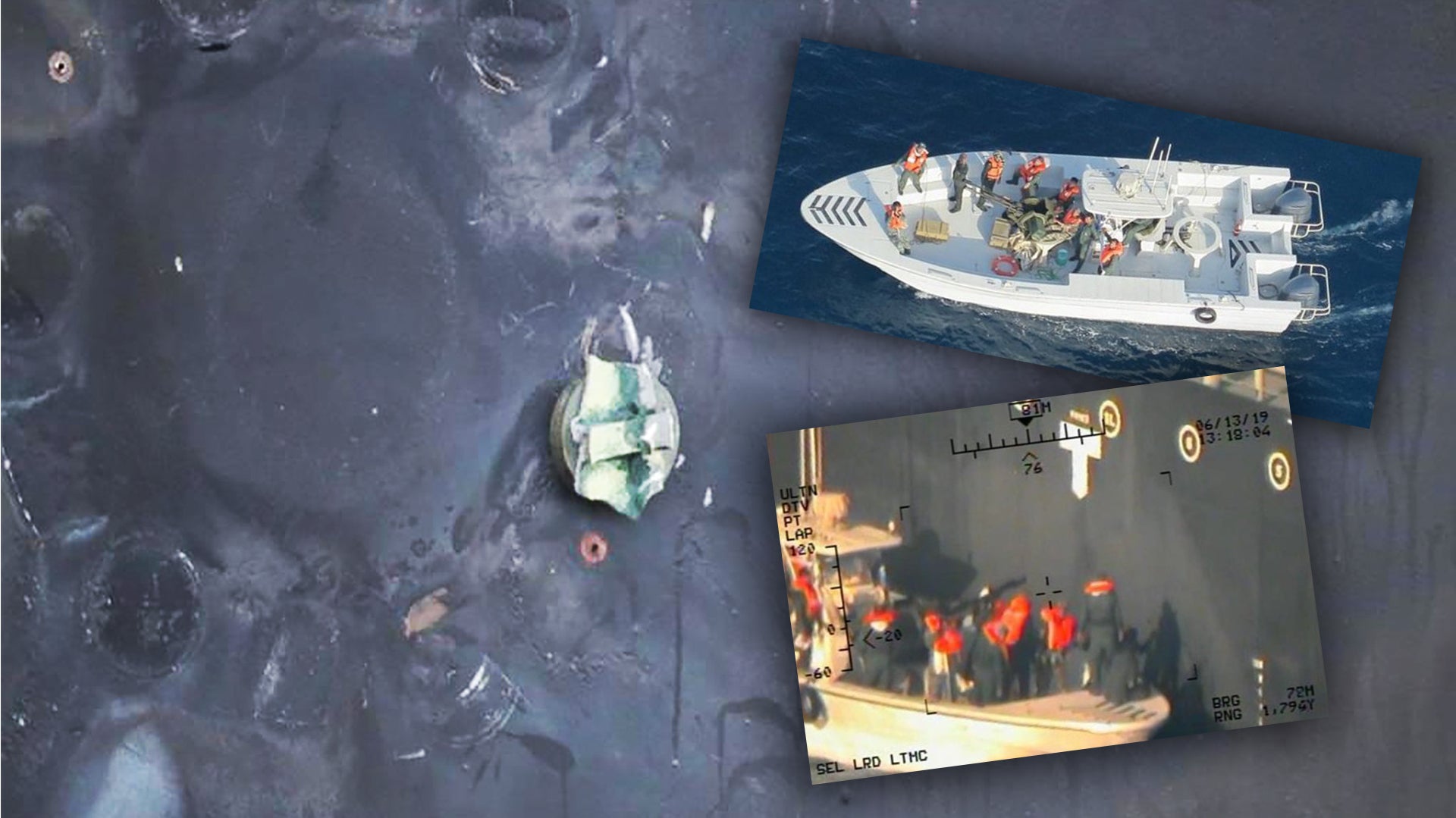As the U.S. works to build an “international consensus” regarding Iran’s involvement in the recent tanker attacks in the Gulf Of Oman, the Pentagon has released new higher resolution images from overhead assets that watched an Iranian fast boat remove the undetonated limpet mine from one of the vessel’s hull, as well as other details about the hours leading up to the attack. The full-color images are far clearer than the grainy infrared video we original saw of the supposed Iranian activities. The images also show the damage done to the vessel in detail.
Here are the new photos:
Below is a remarkably clear overhead image on the Gashti class patrol boat and its occupants that approached the Kokuka Courageous and removed a limpet mine from its hull. The U.S. says the boat was operated by the hardline Islamic Revolutionary Guard Corps (IRGC), not the Iranian Navy.
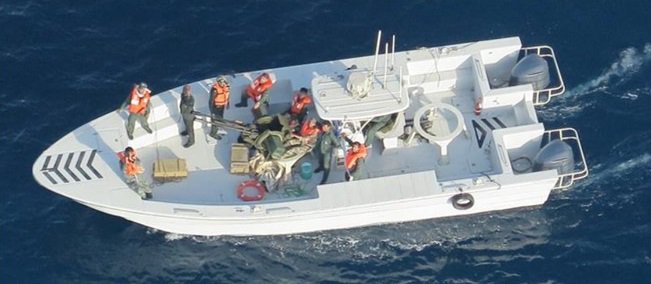
Below is the visual spectrum electro-optical footage of the removal of the mine. We saw FLIR imagery of this act late last week. This screencap is from footage shot from an AN/AAS-52 MTS surveillance and targeting sensor turret that is commonly found on the Navy’s MH-60R helicopters. Another variant of it is installed on MQ-9 Reaper drones.

Below is a new image showing a base attachment adapter of the limpet mine still attached to the ship after the removal of its body. This was shot from an MH-60R helicopter.
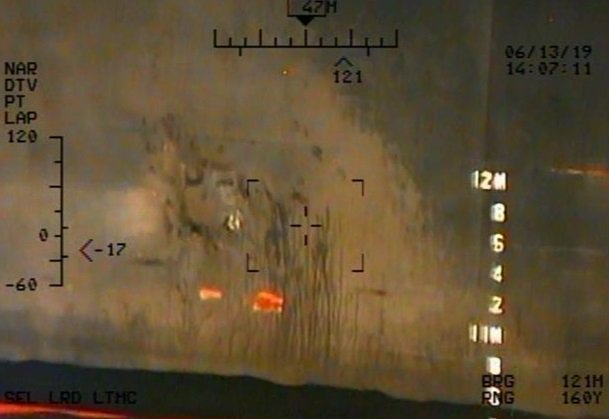
The U.S. Navy also got high-resolution images of a base adapter from the mine, measuring roughly three inches in diameter, after the Iranian boat showed up and plucked off its body. Multiple base adapters like this one are used in a ring on the underside of a large limpet mine to attach it to a ship. The others seemed to have fallen off or remained attached to the mine when it was lifted off the ship’s hull.
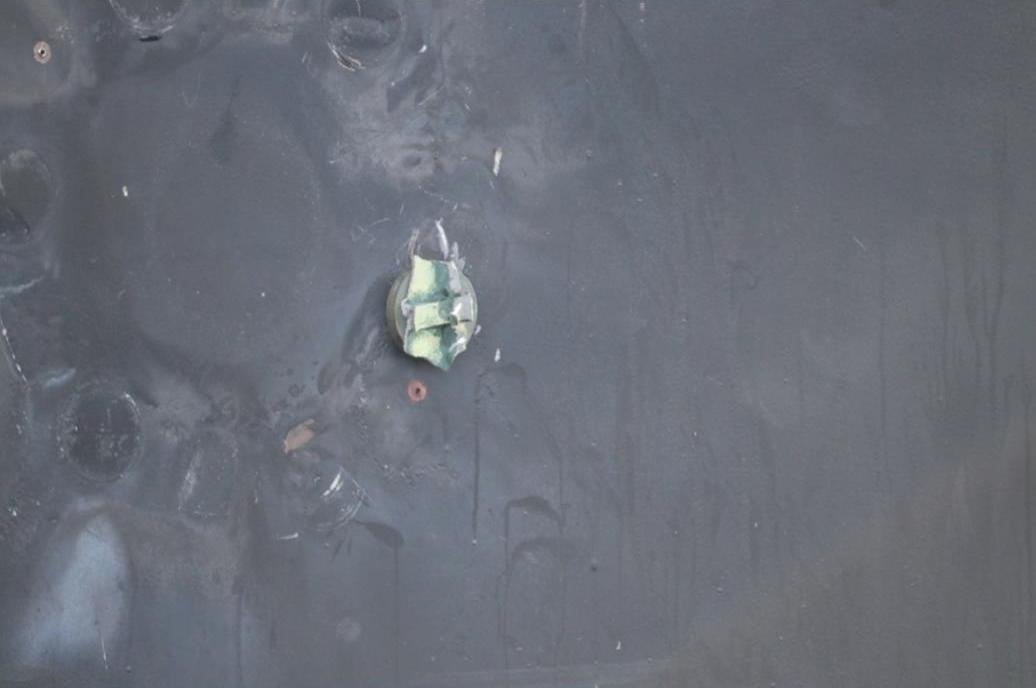
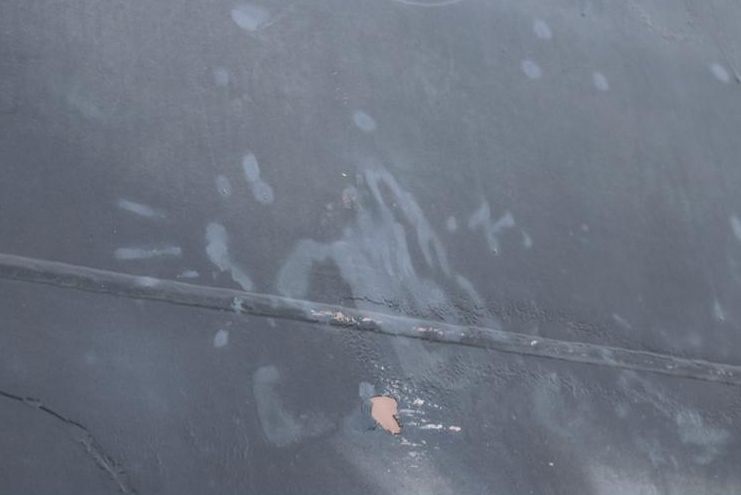

Below is the damage that was done by the mine that did detonate. The small round hole appears to be part of the ship’s mechanical systems.
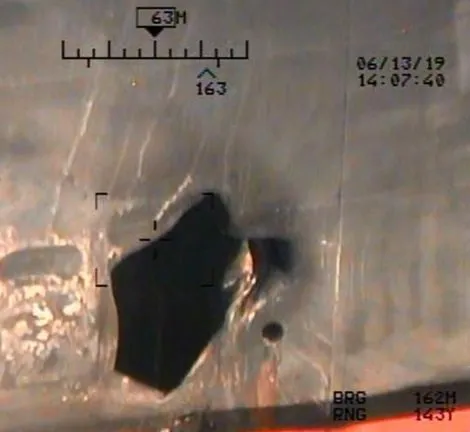
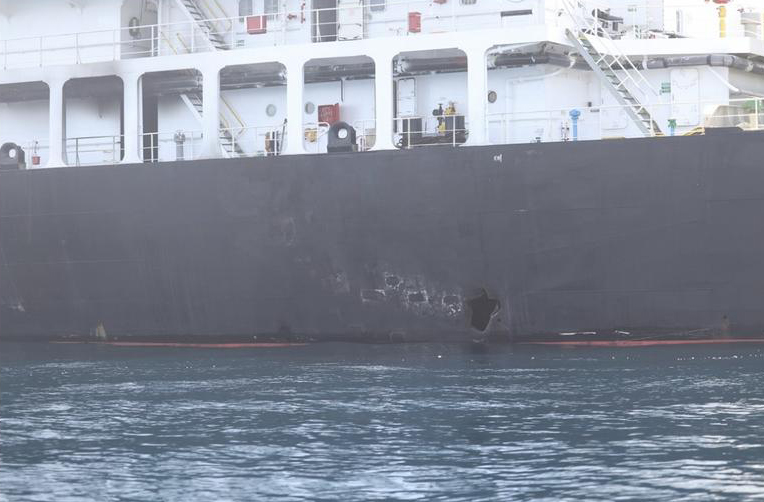
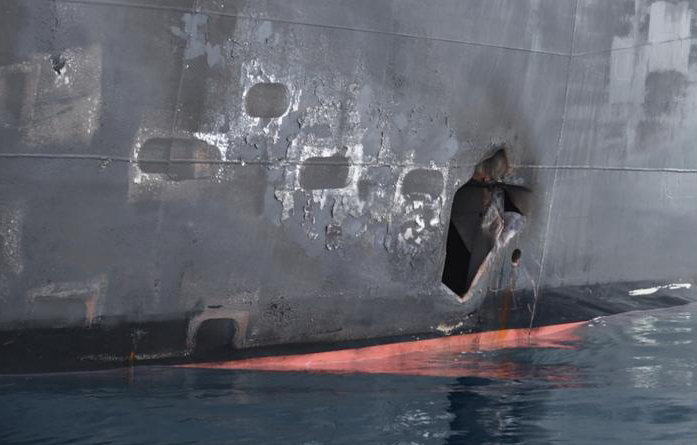
The Pentagon’s official sequence of events now reads as such:
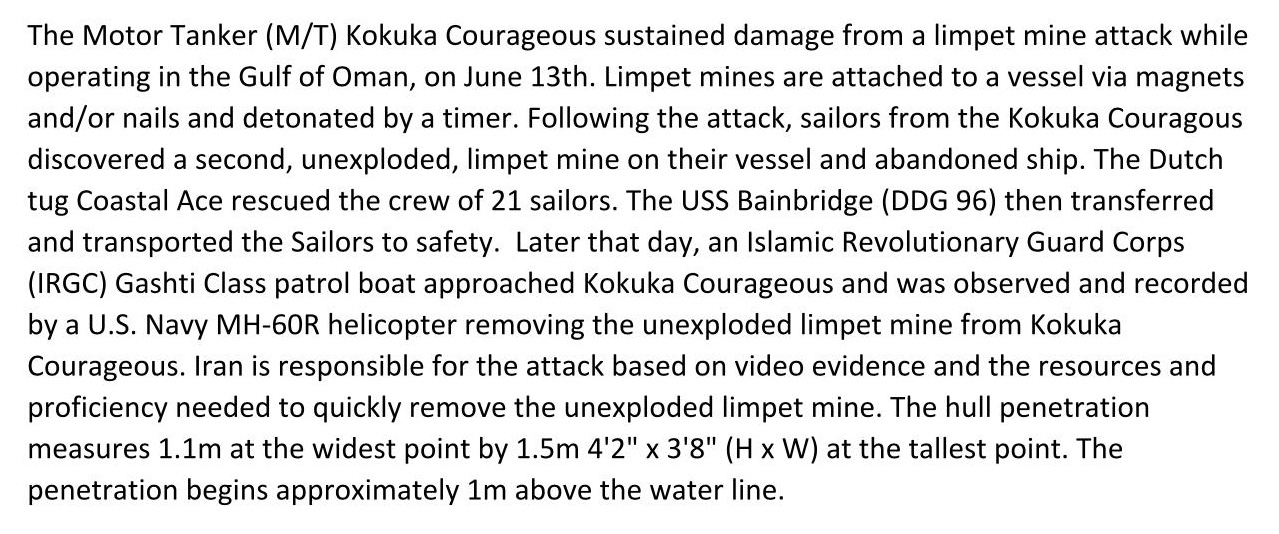
Meanwhile, Iran has said that it will begin stockpiling enriched uranium over the limits outlined by the Iran Nuclear Deal that the Trump Administration has already withdrawn from. The U.S. has called this “nuclear blackmail” and says Iran should keep to the terms of the deal despite the fact that the U.S. has tossed it out.
We also now have an official statement from U.S. Central Command confirming the reports that an MQ-9 Reaper drone was shot down over Yemen last week and that Iran tried to shoot down another near where and shortly before the attacks on the tankers occurred off the coast of Iran in the Gulf of Oman.
A U.S. MQ-9 was shot down over Yemen by what we assess to be a Houthi SA-6 surface to air missile on Jun 6, 2019. The altitude of the engagement indicated an improvement over previous Houthi capability, which we assess was enabled by Iranian assistance.
On June 13, 2019, according to our assessment, a modified Iranian SA-7 surface-to-air missile attempted to shoot down a U.S. MQ-9 over the Gulf of Oman to disrupt surveillance of the IRGC attack on the M/T Kokuka Courageous. The MQ-9 had arrived minutes earlier at 6:20 a.m. local time at the motor tanker (M/T) Altair and had observed the ship on fire.
The SA-7 was ineffective and its closest point of approach to the MQ-9 was approximately one kilometer.
Subsequent analysis indicates that this was a likely attempt to shoot down or otherwise disrupt the MQ-9 surveillance of the IRGC attack on the M/T Kokuka Courageous.
Lt. Col. Earl Brown, U.S. Central Command Spokesman
The fact that Houthi rebels are now equipped with road-mobile, radar-guided SA-6 surface-to-air missile systems is a very concerning development. A modernized version of the SA-6, the SA-11 ‘Buk,’ shot down MH17 over Eastern Ukraine nearly five years ago. Yemen has had the SA-6 since the 1980s (see CIA document here). So, it’s not clear if Houthi rebels and their Iranian benefactors have gotten older stocks working or if these systems were acquired elsewhere and smuggled into the war-torn country.
In addition, the Defense Department now says another 1,000 troops are being sent to the region for “defensive purposes.” Over the weekend the UK said it is sending Royal Marines to protect shipping interests in the region.
UPDATE: 5:35pm PDT—
Here are the slides the DoD released detailing the timeline and locations surrounding the attacks and the Iranian boat crew’s recovery of the undetonated limpet mine:
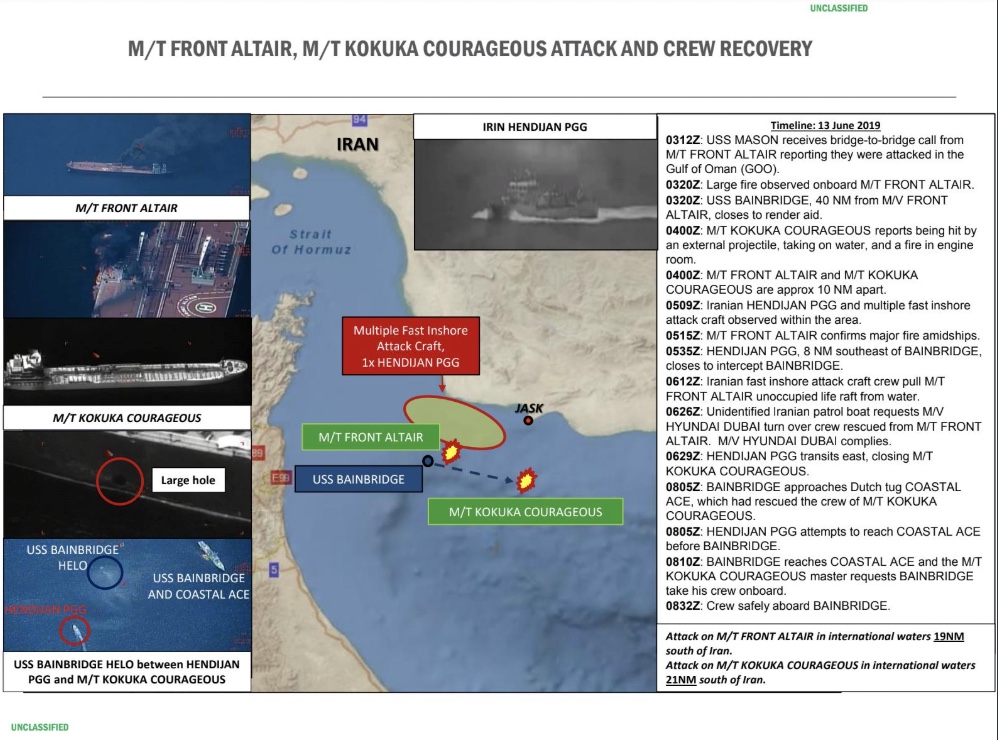
The account above gives us the impression of a far more dynamic situation as USS Bainbridge arrived on the scene and the use of more substantial Iranian naval assets in the attack. The Hendijan PPG has a missile capability.

Note that the U.S. Navy says an Iranian missile boat tried to block their approach to the Kokuka Courageous and that the small boat rendezvous with an Iranian tug after grabbing the mine off the ship.
These accounts, if they can be backed up in full, provide a far clearer picture of Iran’s hand in the attack.
Also, our awesome comments section pointed out that Iran has a limpet mine that matches the description of the one used:
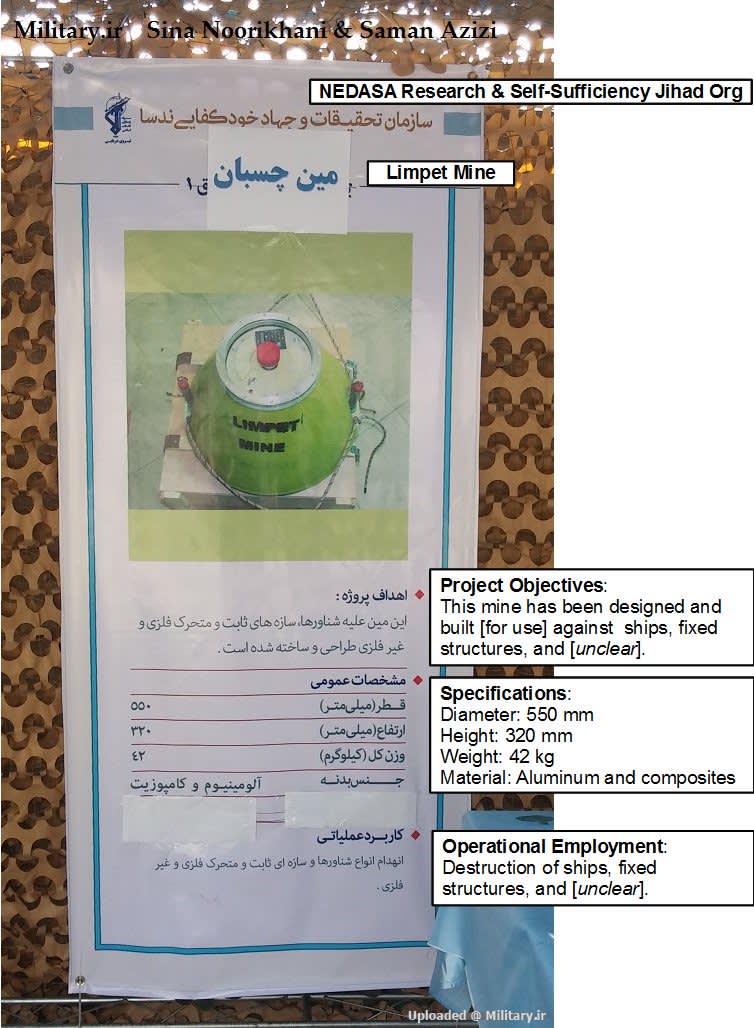
We will continue to update this post as more information comes available.
Author’s note/correction: We updated the text to reflect the fact that, as our commenters pointed out, the large mine type likely used would have a ring of adapters to attach it to the ship’s hull. So, a ring of smaller mines was likely not used. This also makes the idea that a large mine alone did the severe damage to the ship far more plausible.
Contact the author: Tyler@thedrive.com
